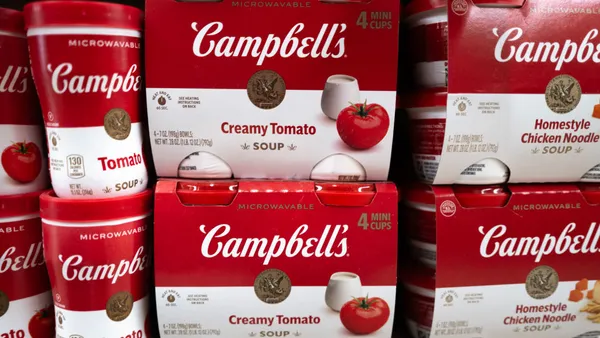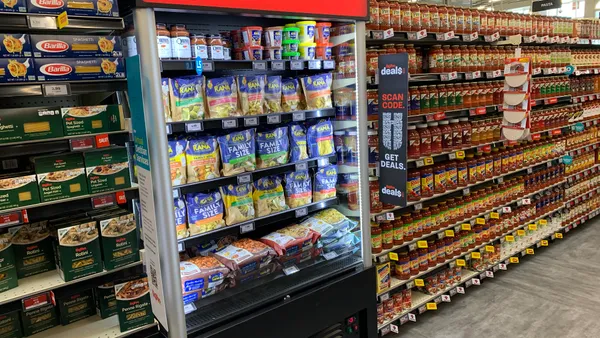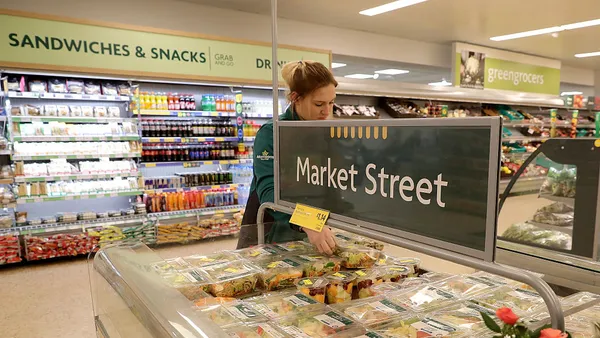There is an old adage that what gets measured gets done. In the supply chain world, a more accurate saying may be that what gets measured gets improved. This is certainly true with supply chain sustainability — data collection and analysis are critical to understanding what a product is made of and where it comes from. Without this foundational information, sustainability claims are, at best, just a guess, and at worst, they can run afoul of environmental regulations.
What is traceability in your supply chain really worth? Across industries, the financial impact is significant and growing. According to a recent McKinsey survey, nearly half of Gen Z (49%) and Millennials (48%) are willing to pay more for sustainable products. Beyond consumer sentiment, however, supply chain traceability represents a critical cost-saving opportunity. A recent report from Avery Dennison shows that overproduction wastes $64.5 billion each year. Addressing this issue could reduce packaging waste and carbon emissions by eliminating unnecessary transportation.
Conversely, fines and penalties are legitimate concerns for businesses as extended producer responsibility (EPR) legislation increases nationally, and for the food industry, more than 15 sustainability-related regulations are expected to take effect by 2030. New regulations in Europe regarding Digital Product Passports (DPP), tools for digitally collecting and sharing data across a product’s lifecycle, are likely to impact global trade as well.
To truly improve supply chain sustainability, companies must prioritize end-to-end traceability of their products. “Traceability is really the who, what, where, when and how of the supply chain,” says Vivian Tai, Director of Innovation, Community Engagement, with GS1 US, the leading not-for-profit information standards organization. “When you have that level of visibility, it allows you to have accountability — to know what’s happening to your products every step of the way and be able to make better choices,” she explains.
Enhancing transparency throughout the supply chain
As Tai notes, traceability makes a product’s every move through the supply chain visible to all stakeholders. To gain that transparency, products must first be assigned globally unique identifiers, such as GS1 Global Trade Item Numbers (GTINs) or Global Location Numbers (GLNs). Once each item or commodity can be identified, then its movement and contents can be traced.
This data allows businesses to optimize decisions across the supply chain, such as shipping routes and related fuel and resources. For example, traceability reveals if products are traveling a longer distance than necessary, or if a route could be optimized to avoid elevation and generate fewer emissions as a result. Weight and container packaging data can be tracked, and all of this supports emissions reduction.
Armed with data on annual emissions and emissions intensity, which involves transportation efficiency, producers can better monitor their Scope 3 emissions and take steps to lower them throughout the value chain.
Tracking materials’ origin
Traceability is also vital for verifying the sources and contents of raw materials. With identifying data, companies can confirm if their materials contain a percentage of recycled content, or what percentage of virgin feedstock was used for a given product. Certifications for fair trade practices or organic farm provenance are also key data points, all of which can be embedded in digital traceability solutions.
“Environmental labels or certifications can be linked as attributes to a particular product, but it all hinges upon having globally unique identifiers on the products themselves,” Tai says. Once products or commodities can be uniquely identified, traceability information can be captured by a variety of technologies, ranging from 1D barcodes like the GS1-128 for logistics units to RFID (Radio Frequency Identification), among others, and made available as a DPP that can be accessed via 2D barcodes, such as QR codes.
The key to this is utilizing a common language for traceability data, such as the Electronic Product Code Information Services (EPCIS) Standard. This standard streamlines the data-sharing process throughout the supply chain and allows all stakeholders to input common information and data formats into their chosen database or digital solution. Then, all points along the value chain and even end consumers can access it via QR codes or other digital formats.
“A solution like EPCIS facilitates interoperability for all trading partners,” says Tai. “That data sharing means better demand planning and inventory management, and a better understanding of origin and composition. Being equipped with this information can help enable a circular economy,” she says.
Standardized data that can be accessed by all stakeholders also improves compliance with EPR and other regulatory requirements around end-of-life disposal. Data on content and recyclability can be shared with regulatory bodies, for example, and producers can demonstrate they’re facilitating recycling, composting or other disposal methods by easily sharing that information with consumers via 2D barcodes.
“Accessing that ledger of information is extremely valuable when producers need to take responsibility for what they produce,” says Tai.
Turning waste into value
With end-of-life data in digitized repositories, stakeholders at every step of the supply chain are better equipped to recycle or upcycle materials. Producers and consumers alike can verify what can be recycled or composted, and they can confirm if products can be diverted for reuse, repair, or remanufacture, thereby keeping them out of waste streams for as long as possible.
For end consumers in particular, this data is very helpful since many people struggle to understand variations in recyclability or what their local collection service will accept. “Simple, direct instructions on packaging, say, via a QR code, is an important interface between brands and consumers,” Tai says. “Traceability data even helps them decide what to buy when they can see how far it traveled, what it’s made of and how to make better decisions with the product.”
Consumers can make more localized, sustainable purchasing decisions, and businesses can optimize material usage and reclamation. All of these choices drive more sustainable operations, and they all start with consistent, accessible traceability data.
Follow the thread of traceability
Consumers and regulators both increasingly expect transparency in supply chains — and now technology is ready and available to support these expectations. With innovative approaches to 2D barcodes, RFID and other digital solutions, companies can ensure their products are exactly what they say they are, that they came from the right sources, and that they can be disposed of in the least wasteful way possible.
From reaching eco-conscious customers to better regulatory compliance, traceability through the supply chain improves businesses as well as the environment.
Learn more about improving your sustainability with GS1 supply chain solutions
About GS1 US:
GS1 US® enables companies to power their supply chains to deliver safe, consistent, authentic and trusted experiences. Best known as a source for UPC barcodes, GS1 is a not-for-profit global data standards organization that creates a common language for companies to identify, capture, and share trusted data that links their physical and digital supply chains. Millions of businesses around the world power commerce with GS1 Standards. Learn more at www.gs1us.org.










